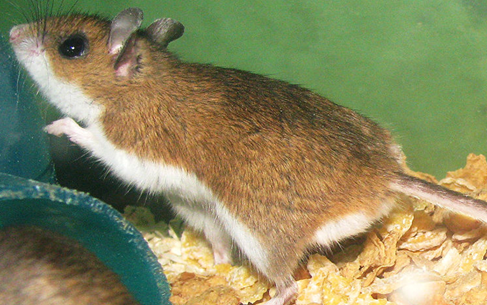From tiny mice to giant capybara, rodents play a role in nature, too
As of 2021, the American Society of Mammalogists has recognized 2,277 different species of rodents, making up 35% to 40% of all mammal species on the planet, depending on which authority you talk to.
Members of the Order Rodentia range in size from the African pigmy mouse, with a 2½-inch body length and the weight of a couple of dimes, to the capybara of South America, whose body can reach 3 feet to 4 feet and weigh up to 175 pounds.
While the capybara is certainly a solid piece of rodent, it would look like a Mini Cooper parked next to a school bus compared to Josephoartigasia monesi. The discovery of this 2- to 4-million-year-old fossil in Uruguay was reported in 2008. Its well-preserved skull measuring 21 inches long suggested to paleontologists that it probably weighed well over a ton.

Ohio has 19 native species of rodents
Ohio has 19 native species of rodents, plus three introduced species from Europe that have done rather well for themselves — the house mouse, brown (or Norway) rat and the black rat. That works out to 39% of the 57 species of mammals that regularly inhabit the state.
(Historical records show that Ohio had also formerly been home to an additional 10 species, including such iconic animals as the eastern timber wolf, American bison, eastern elk, Canada lynx and eastern cougar).
The most abundant rodent, and indeed mammal of any sort, east of the Rockies is Peromyscus leucopus, the white-footed mouse of brushy and forested habitats. But P. maniculatus, the deer mouse, may have the overall edge in total numbers since it is found in all manner of habitats throughout most of the continent, from southern Mexico to the frost line in northern Canada, with the exception of the coastal states of the Southeast.
Mice play an important role in nature

It would be difficult to overstate the ecological importance of these small mammals. Since both species are primarily active at night, it’s no surprise they are the main item on the menu for many of our owls. But the list of predators that feed on them also includes hawks, foxes and coyotes, snakes, weasels, skunks, shrews, racoons, and even squirrels, bears and large fish.
Although both mice feed primarily on seeds, they also eat a wide variety of fruits, fungi, various parts of plants, invertebrates, eggs, carrion ... and bone.
Mature adult male white-tailed deer typically shed their antlers by late February. But by May, you’ll seldom find any while walking through the woods. Shed antlers are composed of pure calcium, an important but relatively rare nutrient in the diet of many mammals. The sharp, continuously growing incisors of mice (and other rodents) help explain why you don’t find piles antlers strewn across the forest floor.
White-footed mice and deer mice are similar in appearance. Both have white undersides and white feet, with upper surfaces varying among individuals from dark to tawny or rufous brown. So, their common names aren’t much help.
But the tail of a deer mouse shows a distinct separation between the dark fur above and the white below, while in white-footeds the dark on top of the tail fades gradually into white below. There are other more subtle differences, but it’s worth noting the two-toned Peromyscus mice are easy to distinguish from the all-gray house mouse, which also differs by having a naked tail.
Mice fall for oatmeal and peanut butter
In the olden days, when I took my field biology classes out to survey the mouse and shrew population of a nearby woodlot, we’d set out a grid of Sherman Live Traps in the early evening and bait them with a tantalizing mixture of oatmeal flakes and peanut butter. On entering the metal box and stepping on a pressure-sensitive plate, the door would snap shut trapping the critter inside.
Next morning, I’d plop the unhappy resident into a plastic bread bag, pinch her (through the plastic) by the loose skin at her nape, turn the bag inside out, and have a look at her.
I never let undergraduates handle the mice because of the very unlikely — but not zero — chance that a Peromyscus mouse might carry one of the hantaviruses, which can cause a severe respiratory disease called Hantavirus Pulmonary Syndrome, HPS. (House mice don’t carry the virus.) No human cases of HPS are known from Ohio, but still…
After collecting a bit of data and marking the animal, we’d watch it scamper off to one of its many safe retreats on its territory, or bolt 20 feet up the nearest tree to get as far away from us as possible. So, you might think that after such a traumatic experience, a mouse would never go near one of the Shermans again. But some of them actually became “trap happy.”
You’d empty a trap into the bag, and there’d be old number R-3 again, looking up at you with his beady, black eyes, and peanut butter smeared across his pointy little face.
Ken Baker is a retired professor of biology and environmental studies. If you have a natural history topic you would like Baker to consider for an upcoming column, please email your idea to fre-newsdesk@gannett.com.
This article originally appeared on Fremont News-Messenger: Nearly 40% of mammals are rodents. How many can be found in Ohio?
